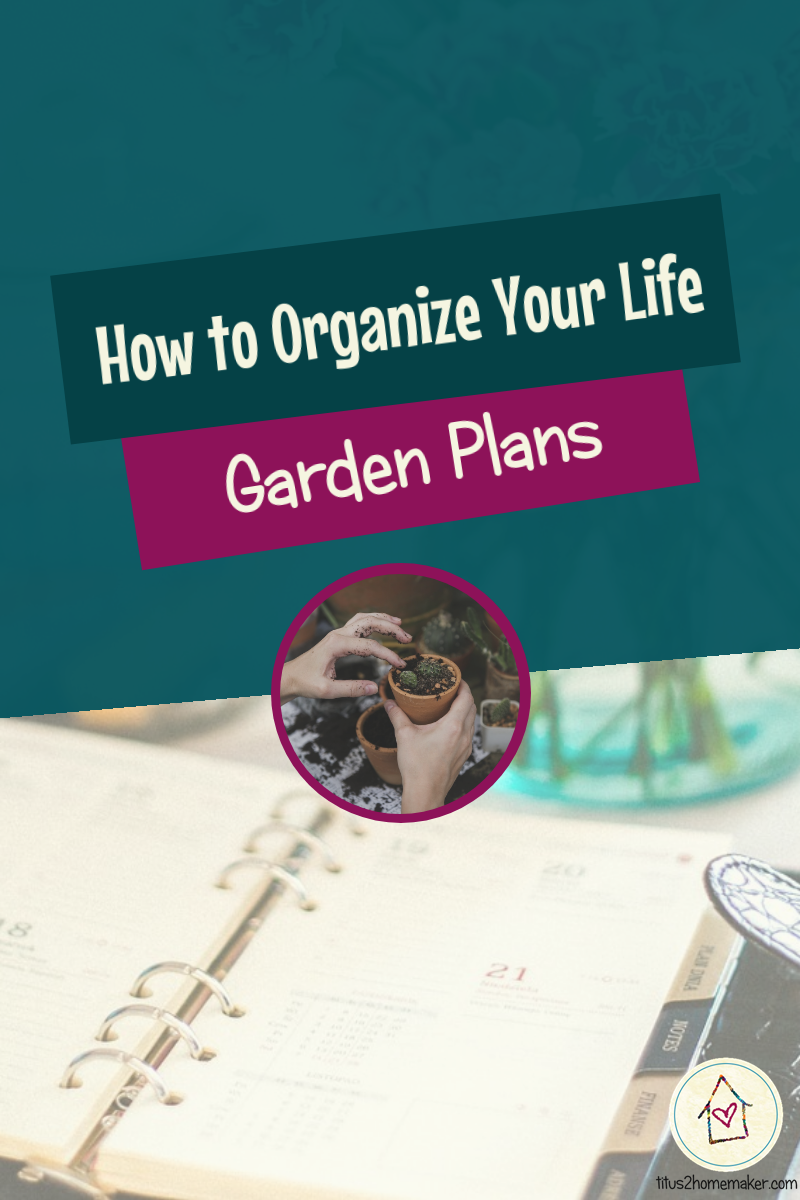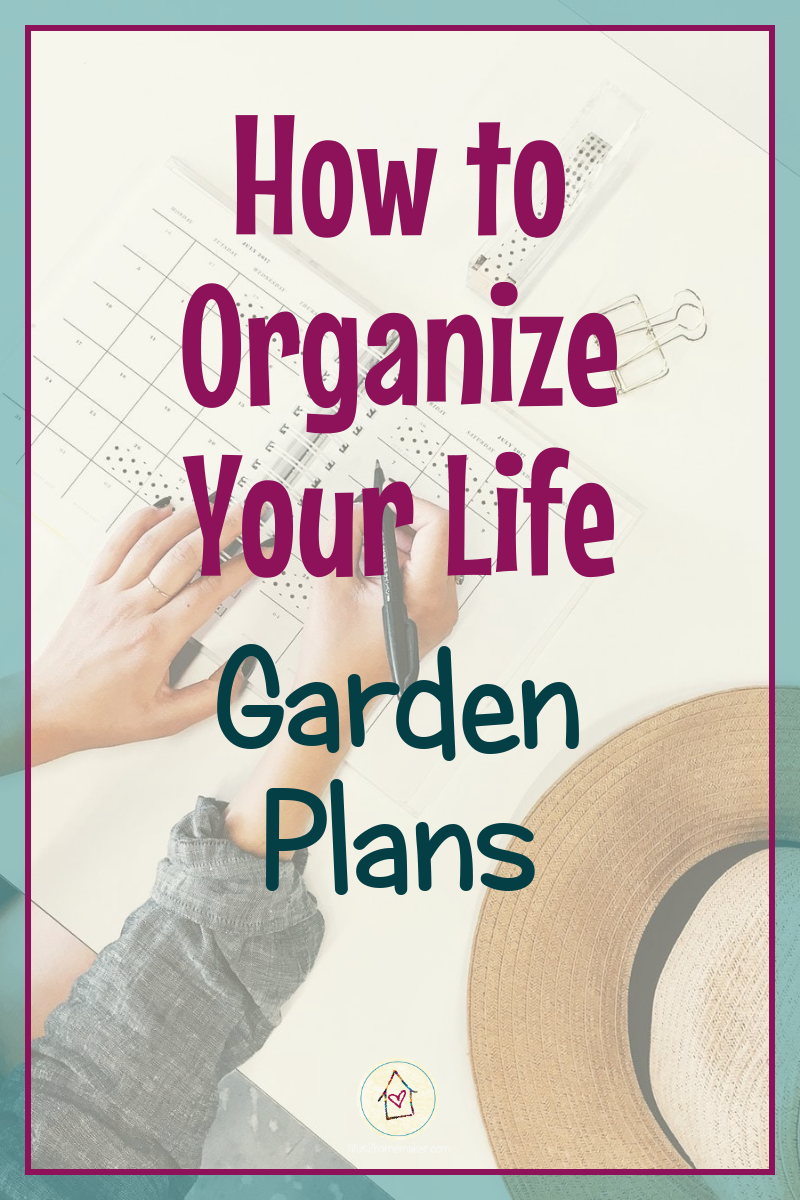Updated Sep. 23, 2019. Originally publishe Sep. 3, 2013.

If you’re just stumbling across this, please click here for the other posts in the series.
Do You Garden?
If you don’t garden at all, you obviously don’t need this post. I suspect, though, that those who don’t skipped over it in the first place, so if you’re reading this, you do garden! The extent of organization you require should correlate strongly with the extent of your garden. If your “garden” consists of a single tomato plant on the front porch, you probably don’t need to keep track of much. If you have a 400-square-foot garden, that will take more planning. (And, of course, there’s a whole spectrum in between.)
(Side Note: Wildcrafting is, in a sense, a form of gardening, so if you wildcraft regularly, even if you don’t plant things yourself, plan your wildcrafting the same way you would your gardening — you still need to know what to harvest when and what you’re going to do with it.)
I know it’s about as far from planting season as possible right now (at least for those of us in the northern hemisphere). But that’s a perfect time to plan, so you’ll be ready when spring rolls around!
My blogging friend Angi has a great Gardening Notebook, an ebook full of pages specifically for garden planning. If you’re looking for forms to use in this section of your notebook, be sure to check it out.
What
The first thing you might want to keep track of is what you have planted, or intend to plant. Are there seeds (or seedlings) you need to order? Seeds you already have stored? Cuttings you need to take? You won’t know if you can’t remember what you planned to plant.
STEP 1: Decide what you want to plant, and make a list.
You might want to also note how much of each you intend to plant. (Do keep in mind that planting an entire seed packet is not required just because they come packaged that way. A single zucchini plant produces far more than enough for an average-size family, but most people seem to feel they must. plant. every. single. seed. No wonder people’s gardens are overrun with zucchini and the kids hope they never see another green squash!)
STEP 2: Decide on a place for your garden plans.
I like to keep my garden plans in their own binder. That way I can store it with my seeds, carry it to the garden area if I need to, and so forth. Keeping it in its own binder also allows me to store seed catalogs in the same binder so they’re all together. (I use those 3-hole punched magazine holders.) You might prefer to keep yours in your household binder, though, or electronically, or use some other organizational method entirely.
When
One of the most important things to keep track of is when each variety needs to be planted. You’ll want to have a few things on hand:
- Your list of plants (made in step 1)
- A plant hardiness zone map (so you know what planting zone you’re in)
- A chart for your area showing the expected first and last frost dates
- Some source for information regarding the planting of each plant on your list (how long is its growing season; should it go out before or after the last frost, and by how long?)
My state’s extension office has a pretty neat planting chart where you can write in the first and last frost dates and then it shows you when to plant and when to harvest each vegetable variety. It’s a pretty good resource for combining the last two items on that list, for me. If you’re in another area, I think you should be able to use the same chart, but you’ll have to find your frost dates elsewhere.
STEP 3: Locate and print a plant a plant hardiness zone map (or clip one from a seed catalog). Put it with your plant list.
STEP 4: Locate your first and last expected frost dates and add them to your plans.
(If they’re not on some separate chart of their own, you could write them onto your map.)
STEP 5: Find or create a chart indicating when you need to plant & harvest each plant on your “to plant” list.
STEP 6: Make a note on your calendar of the first date you need to put plants or seeds into the garden, and/or earlier if you have work to do preparing the soil.
Where
You will also need to know where to place each plant. If you only have one garden plot, then where the plants go, in general terms, should be a no-brainer. But you will still want to have an idea of where within the plot each item is to go. This will enable you to make adjustments if you don’t have space for everything you wanted to plant, plant in “layers” if you have fast growers and slow growers, allow supports for climbers, keep small plants from being overshadowed by taller ones, etc.
I usually put together a rough diagram on graph paper showing what I want to put where.
It’s just a plan – just like with a menu plan, it’s a tool for you and you’re free to adapt it later! But having a starting point can keep you from forgetting what you intended to do (or, worse, whether you’ve already planted something in a given space and will be digging it up if you try to plant something new there!)
STEP 7: Create a diagram or make notes to remind yourself which plants should go where.
How
Finally, you need to make sure you have accounted for funding this operation! Figure up whether you need seeds, soil amendments, stakes/supports, etc. and be sure you’ve budgeted appropriately.
STEP 8: If necessary, set or adjust a budget line item for gardening supplies.
Have fun planning and planting!
If you’re just stumbling across this, please click here for the other posts in the series.


[…] Computer Files Getting Organized 36: Hobby Supplies Getting Organized 37: Photos & Negatives Getting Organized 38: Garden Plans Getting Organized 39: Prayer Getting Organized 40: Journaling Getting Organized 41: School […]